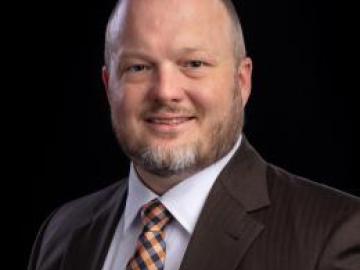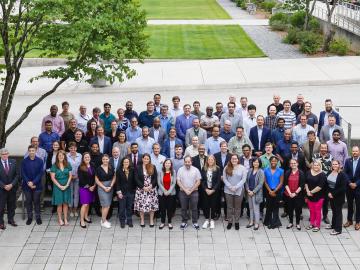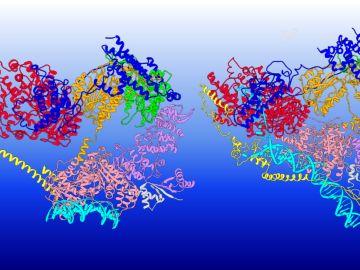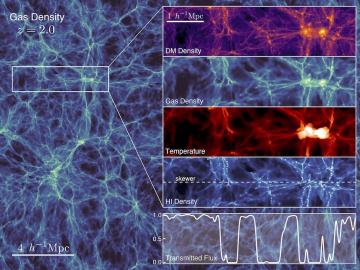
Filter News
Area of Research
- Biology and Environment (30)
- Clean Energy (28)
- Computer Science (1)
- Electricity and Smart Grid (1)
- Fuel Cycle Science and Technology (1)
- Fusion and Fission (14)
- Fusion Energy (3)
- Isotopes (10)
- Materials (31)
- National Security (17)
- Neutron Science (17)
- Nuclear Science and Technology (1)
- Supercomputing (44)
News Type
News Topics
- 3-D Printing/Advanced Manufacturing (6)
- Artificial Intelligence (14)
- Big Data (6)
- Bioenergy (9)
- Biology (16)
- Biomedical (3)
- Biotechnology (1)
- Buildings (6)
- Chemical Sciences (10)
- Clean Water (5)
- Climate Change (17)
- Composites (2)
- Computer Science (11)
- Coronavirus (1)
- Critical Materials (1)
- Cybersecurity (6)
- Decarbonization (17)
- Emergency (1)
- Energy Storage (7)
- Environment (28)
- Exascale Computing (11)
- Fossil Energy (2)
- Frontier (13)
- Fusion (7)
- Grid (10)
- High-Performance Computing (18)
- Hydropower (2)
- Isotopes (7)
- Machine Learning (10)
- Materials (21)
- Materials Science (7)
- Mathematics (2)
- Mercury (1)
- Microelectronics (2)
- Microscopy (3)
- Nanotechnology (4)
- National Security (15)
- Net Zero (3)
- Neutron Science (19)
- Nuclear Energy (14)
- Partnerships (6)
- Physics (10)
- Polymers (2)
- Quantum Computing (6)
- Quantum Science (3)
- Renewable Energy (1)
- Security (1)
- Simulation (19)
- Software (1)
- Space Exploration (4)
- Summit (7)
- Sustainable Energy (9)
- Transportation (4)
Media Contacts

The International Standards Organization has put its stamp of approval on 18 nuclear analytical chemistry methods at ORNL. These testing and calibration methods have received ISO 17025 accreditation.

Early experiments at the Department of Energy’s Oak Ridge National Laboratory have revealed significant benefits to a dry battery manufacturing process. This eliminates the use of solvents and is more affordable, while showing promise for delivering a battery that is durable, less weighed down by inactive elements, and able to maintain a high capacity after use.

Jacob McCulley of the Department of Energy’s Oak Ridge National Laboratory has been named a senior member of the Institute of Electrical and Electronics Engineers, or IEEE, one of the world’s largest technical professional

Experts across varied technology fields gathered ORNL to collaborate on the future of geospatial systems at the Trillion-Pixel GeoAI Challenge workshop. The third iteration of this event focused on multimodal advances in the field, including progress in artificial intelligence, cloud infrastructure, high-performance computing and remote sensing. These capabilities, when combined, can help solve problems in national and human security such as disaster response and land-use planning.

Over the past decade, teams of engineers, chemists and biologists have analyzed the physical and chemical properties of cicada wings, hoping to unlock the secret of their ability to kill microbes on contact. If this function of nature can be replicated by science, it may lead to products with inherently antibacterial surfaces that are more effective than current chemical treatments.

As extreme weather devastates communities worldwide, scientists are using modeling and simulation to understand how climate change impacts the frequency and intensity of these events. Although long-term climate projections and models are important, they are less helpful for short-term prediction of extreme weather that may rapidly displace thousands of people or require emergency aid.

Transcription factor IIH is a veritable workhorse among the protein complexes that regulate human cell activity, playing critical roles both in synthesizing DNA and in enabling DNA repair. But how can one protein assembly participate in two such vastly different jobs? A team of researchers led by chemistry professor Ivaylo Ivanov of Georgia State University used the Summit supercomputer at ORNL to tackle that question.

Growing up exploring the parklands of India where Rudyard Kipling drew inspiration for The Jungle Book left Saubhagya Rathore with a deep respect and curiosity about the natural world. He later turned that interest into a career in environmental science and engineering, and today he is working at ORNL to improve our understanding of watersheds for better climate prediction and resilience.

A research team from the University of California, Santa Cruz, have used the Oak Ridge Leadership Computing Facility’s Summit supercomputer to run one of the most complete cosmological models yet to probe the properties of dark matter.

JungHyun Bae is a nuclear scientist studying applications of particles that have some beneficial properties: They are everywhere, they are unlimited, they are safe.


